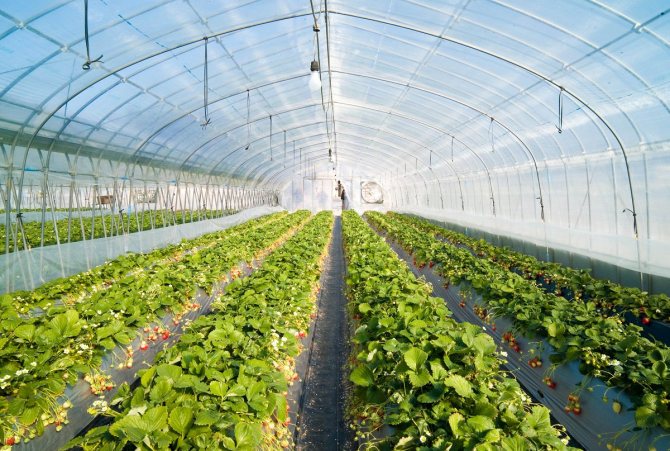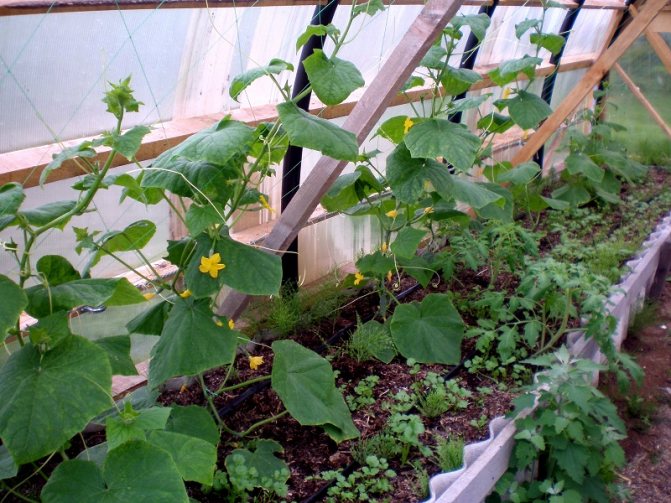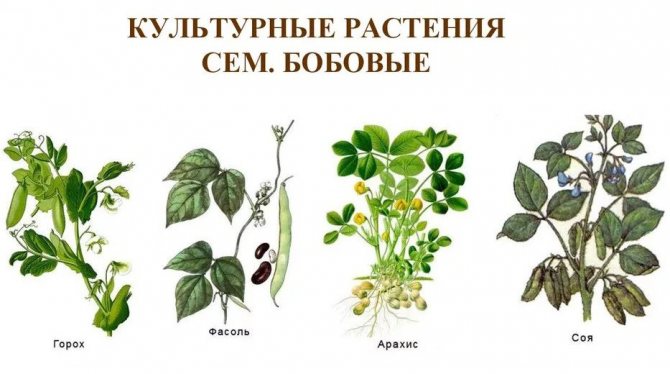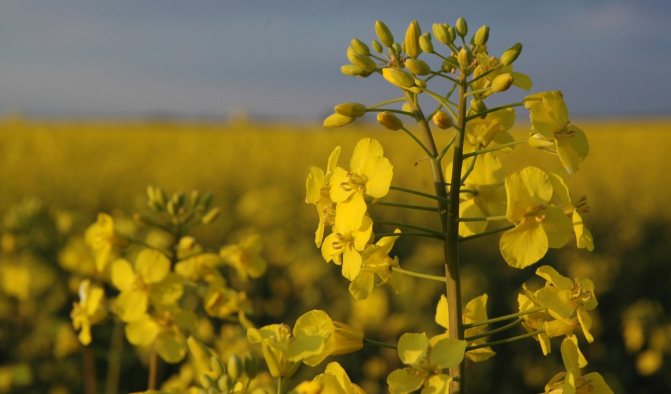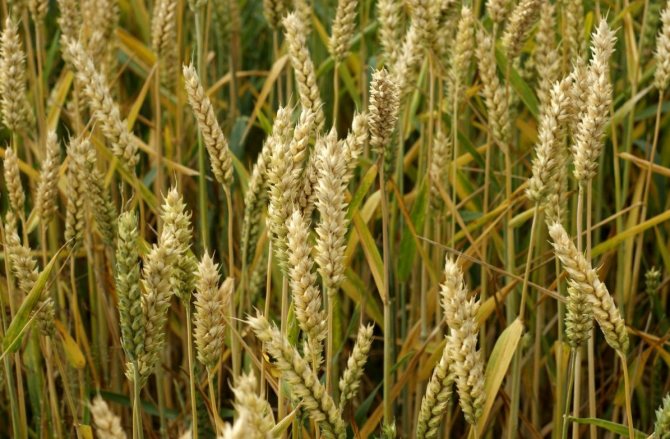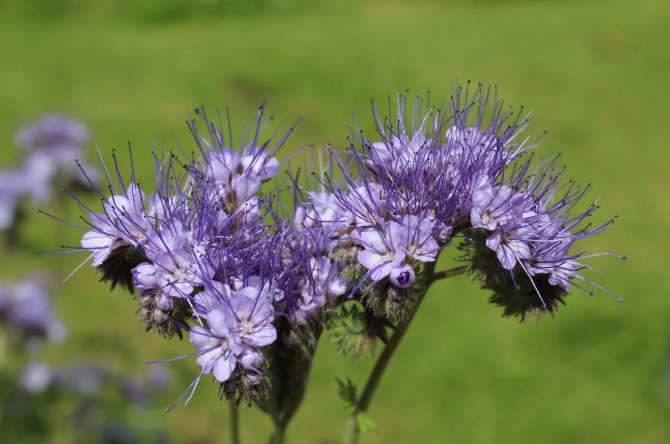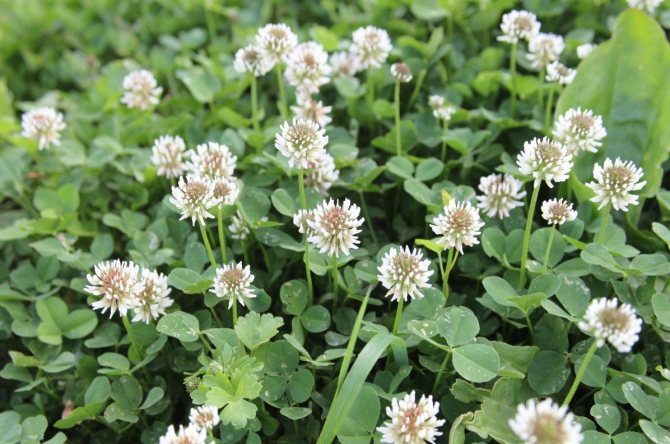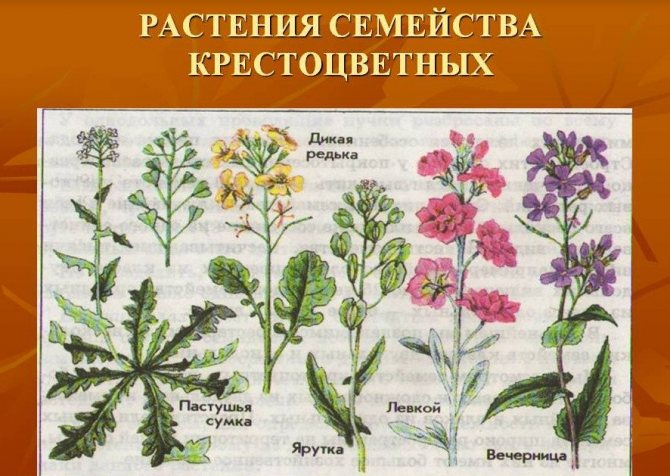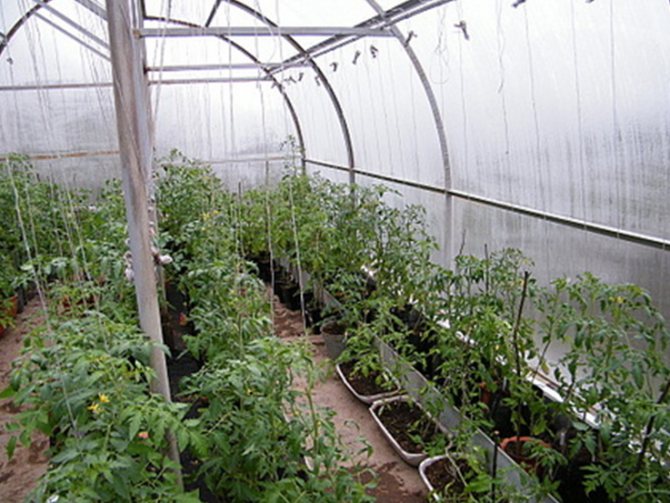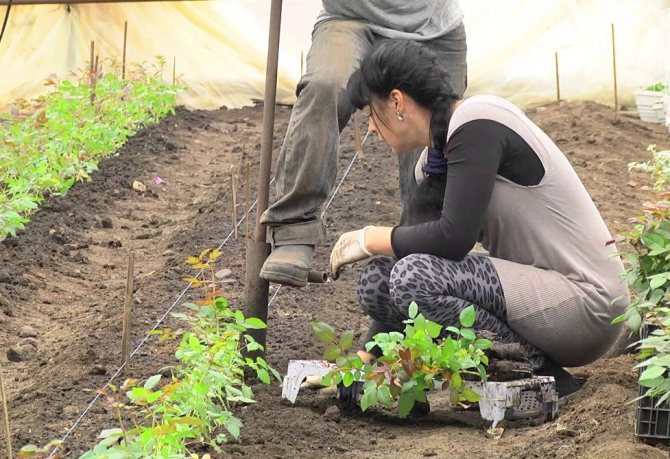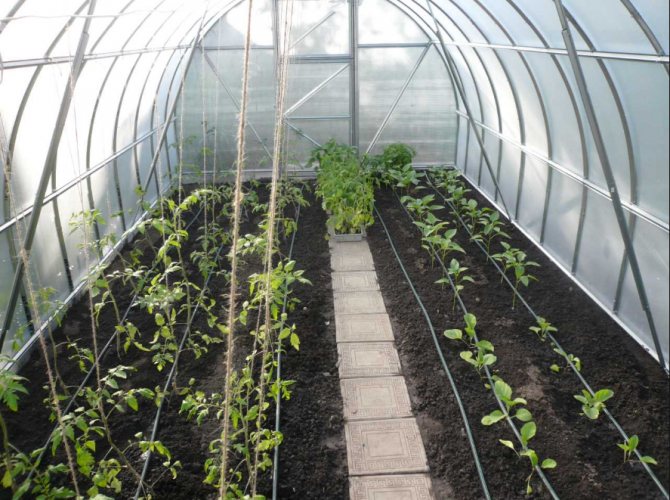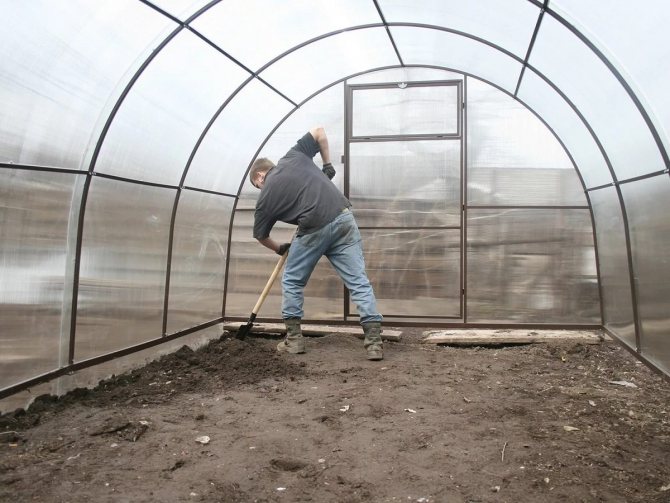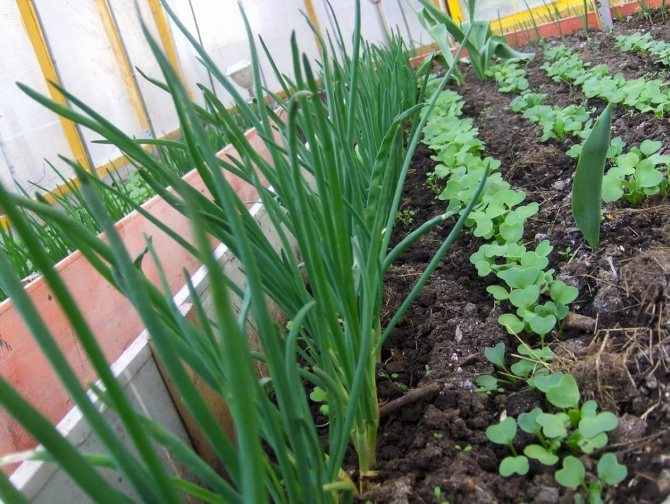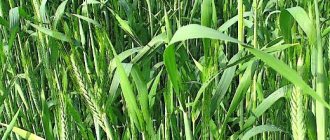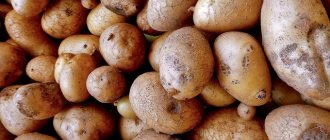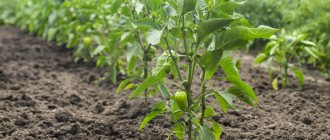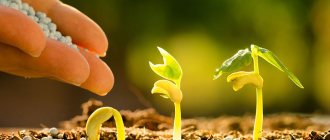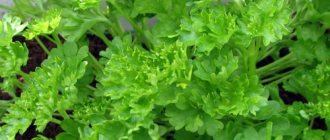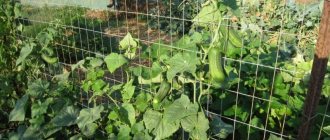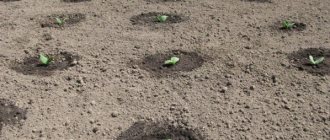You can improve soil fertility in greenhouses with green fertilizers. In this case, you do not need to change, steam and disinfect the soil. Specially selected green manure crops sown on time will help improve the structure and composition of the soil, get rid of pathogens and restore the fertile layer. To facilitate the work of summer residents, I tell you what is the use of greenhouse greenhouses, how to correctly, what plants and when are best to sow.
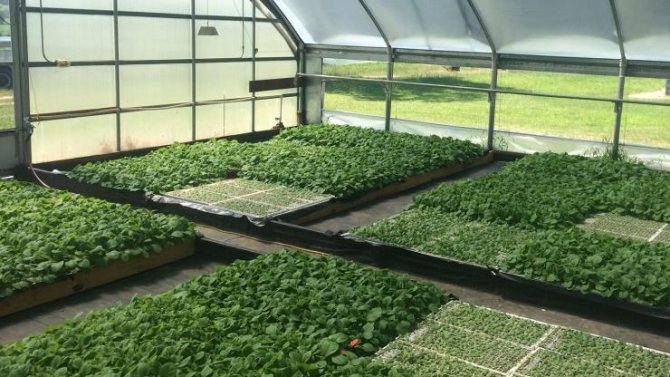
Why plant greenhouse greenhouse crops?
Much is known how to fertilize and improve the soil by applying fertilizers or observing crop rotation in the open field. By the way, I have already talked in detail about how to plant and when to sow green manure on the site. But what to do if you are used to growing vegetables in a greenhouse, repeating the established assortment of crops from year to year?
After harvesting the most common greenhouse vegetables: tomatoes, cucumbers, peppers and eggplants, which suck out the bulk of the nutrients, the soil remains practically depleted, with the presence of various pathogens.
Owners of 2 or more greenhouses are in a much better position. In this case, their alternation is possible. But what if there is only one greenhouse?
What are the options to update the soil in the greenhouse:
- soil replacement once every 3-4 years,
- or the opportunity to give the greenhouse a rest for at least a year,
- or, at worst, replacing the top soil layer,
- or its disinfection.
However, how many are ready to undertake such time-consuming and costly activities?
An alternative, albeit with some stretch, can be the use of green manure crops.
Greenhouse siderata:
- help with fertilizing the soil,
- disinfect her,
- protect from freezing,
- will not allow weeds and pests to roam.
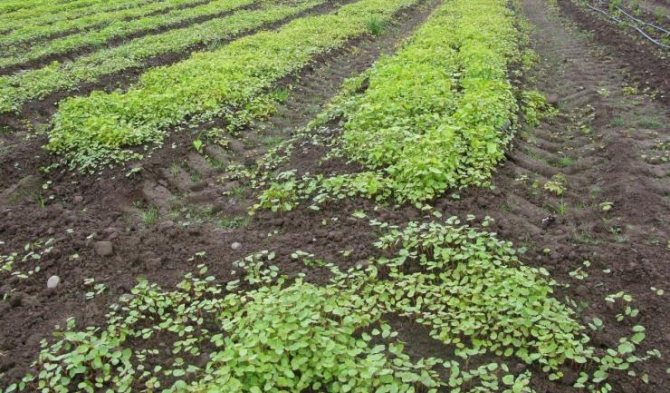

Photo: green manure improves the soil both in the open field and in the greenhouse
entrance
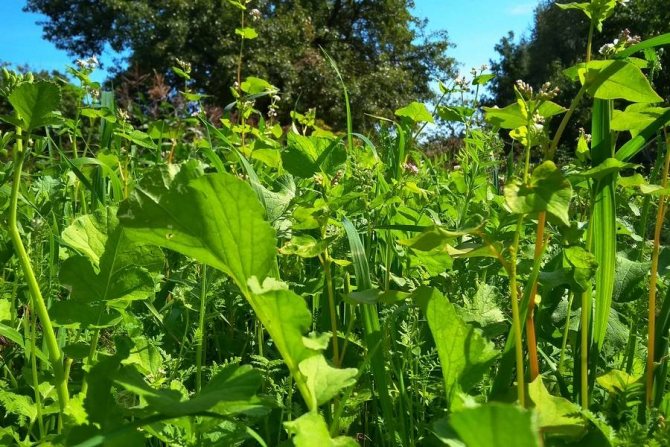

Many summer residents harvested the old-fashioned way - and until spring they forgot about the vegetable garden. Maximum - fertilize and plow (or dig up) for the winter. But an experienced owner knows: to get an excellent harvest, you need to sow green manure in the fall!
What is it and why is it needed
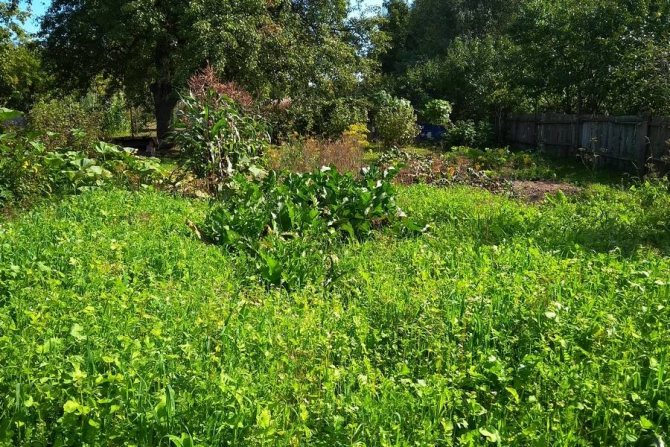

It is clear that any vegetable garden is not collective farm hectares. You can't turn around much with crop rotation, and such a luxury as resting the land for 3-4 years is simply unacceptable, especially if the whole garden is actually one greenhouse in a summer cottage. In the latter case, there is a lot of trouble: it is necessary either to remove the soil layer and add a new one, or fill it up on top of the old one - to change the ground so that at least something grows. And here the siderates will be the best helpers. No, these are not movers, and they will not carry soil into your greenhouse. At first glance, these are the most common plants. However, in terms of their properties and how they affect the soil, green manure is many times superior to the notorious organic matter! And their main advantage is safety. If with manure it is possible to bring new weeds, plant diseases and pests into the garden, then nothing of this will happen when siderizing.
About 400 plants belong to siderata! But only about a dozen cultures are especially popular, and each has its own mission:
- cereals (against weeds) are rye, wheat, oats, barley, chumiza, Sudanese grass, fescue, bent grass and others;
- legumes (provide the soil with nitrogen) - vetch, peas, chickpeas, clover, soybeans, beans, lentils, beans, annual lupine, sweet clover;
- cruciferous (they easily cope with pests, diseases and weeds) - white and gray mustard, winter rape, oil radish, rapeseed;
- borage, namely phacelia - a universal green manure for all occasions. After her, unlike her fellows, you can grow any crop. And she lives well after any kind of plants. By the way, phacelia grown and plowed on one hundred square meters replaces 300 kg of manure.
Greenhouse siderata
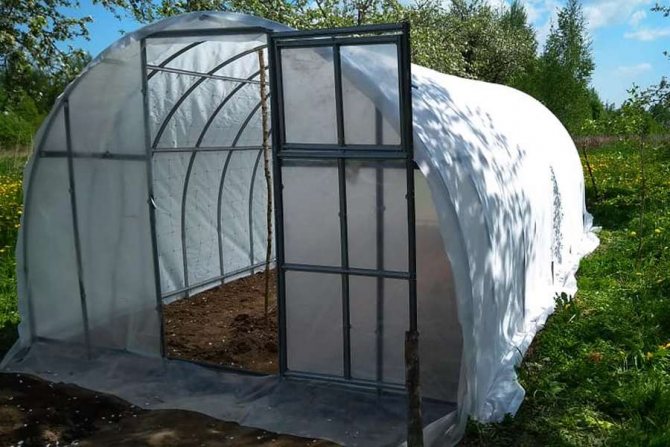

A greenhouse has already been installed or you are planning installation in the spring - not the point: in the fall, be sure to sow the allotted area with green manure. Why autumn? Firstly, in the spring, as soon as it gets a little warmer, it will be necessary to plant early crops, and not wait until May for green manure to sprout and fertilize the soil. This stage must be passed. Second, the longer the green helpers are in the soil, the better. They mineralize it, loosen it, provide it with the necessary elements. Thirdly, early spring shoots of winter grasses will protect the soil from bright sun and frost.
The main thing is to remember: you need to cut or mow siderates before they bloom, otherwise they will begin to sow again and from helpers will pass into the category of pests.
One more point: first decide what to plant in the greenhouse in spring. Depending on this, pick up green manure in the fall. Let's consider the main combinations of cultures.
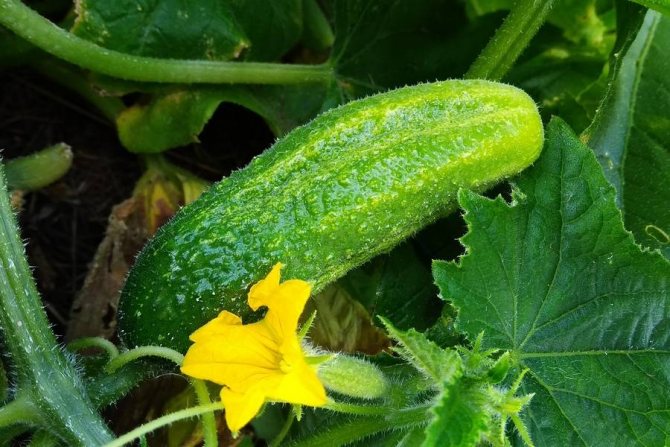

Cucumbers they are excellent friends with olive radish and white mustard. By the way, the latter is good just after cucumbers - it disinfects and actually saves the earth oppressed by a pimply vegetable. An excellent post-cucumber mixture is vetch-oatmeal. Such a combination of green manure will not only supply the soil with potassium, phosphorus and nitrogen, but also cure it of nematodes - roundworms.
You can also precede the planting of cucumbers by growing legumes - lupine, vetch, peas, beans, beans, clover. These green manures will provide the soil with the nitrogen necessary for cucumbers.
Cereals are also well suited - rye, barley, oats, including winter crops - they will heal the soil, saturate it with useful elements.
Tomatoes (peppers, eggplants), by the way, they leave behind a scorched earth effect. There is nothing useful in the soil after them, as well as after cucumbers. Therefore, sideering is simply vital. Especially if the whole garden is one greenhouse, in which you plant tomatoes from year to year.
In the fall, after tomatoes, peppers, eggplants, sow winter cereals - oats, rye or barley. The most valuable gift of cereals is potassium. And he, as you know, is very important for tomatoes. If this element is sufficient, the tomato stems will be strong, and the fruits will be juicy and sugary. By the way, a great alternative to cereals is lupine or phacelia. You don't even need to mow or dig up the last one before freezing. This can be done in the spring just before the tomatoes are planted. Phacelia is no worse green doctor than cereals. It will supply the earth with potassium and nitrogen, defeat the wireworm, neutralize the acidity of the soil and loosen it up well.
Also, without bothering with any alternation, every time before and after tomatoes, you can sow a mixture of siderates from oats, mustard, vetch, rapeseed.
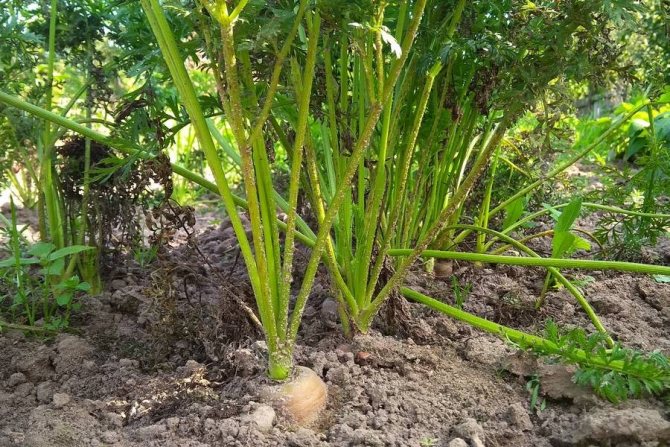

Carrot gets along with any green fertilizers, but prefers rape, rapeseed, oil radish, white mustard.
Onion loves vetch with oatmeal, buckwheat, lupine, phacelia.
Garlic - the guy is moody. It is in no way compatible with legumes, but completely with phacelia and mustard.
Cabbage and radishes can be alternated with cereals, as well as phacelia, sweet clover, buckwheat, clover.
When to sow green manure?
Yes, right now! Late August - early September is the ideal time. Remove the tops after harvest, dig up the garden and sow siderates.Before flowering (and without even waiting for the buds), mow or cut the herbs and leave them on the ground. Do not rush to dig right away. Let the roots work in the ground and the plants rot at the top.
In late September - early October, dig up the garden bed and ... sow green manure again. They will have time to climb before frost and snow. Leave them until spring. If you missed the deadline - waited for the second half of October, sow winter crops (rapeseed, rye, oats, etc.), which will sprout in the spring. And what to do with them later, you already know. Ideally, the spring order is as follows: they cut the herbs, dug in a week, loosened the soil a week later and planted their own cucumbers, tomatoes, and peppers.
Observing this simple algorithm of actions, in 3-4 years you will get the perfect soil, including without replacing it in the greenhouse. You will feel the difference in the very first season!
The three main rules of the gardener:
- Do not sow green manure and main crops of the same family.
- Don't sow the same grass all the time - alternate green fertilizers in the same area.
- The right gardener has no weeds on the plot - only green manure! Because they can be any kind of plants. The main thing is to mow them in time, not allowing them to ripen and sow on their own.
Natalia Medvedeva
Photo by the author
80
Share this
When to plant greenhouse greenhouse crops?
The peculiarities of sowing greenhouse crops in greenhouses depends, among other things, on the type of greenhouses: the polycarbonate coating allows you to start sowing a little earlier in the spring and tighten the terms in late autumn, which cannot be done under film or glass.
Sowing greenhouse greenhouse crops depends on:
- from the structure and covering of the greenhouse,
- from the culture that has borne fruit in the current year,
- from the crop planned for next season.
So where to start preparing greenhouses for the new season?
- First of all, you need to decide what kind of crops you will grow under shelters this year. Based on this, further work will be carried out.
- It is also important to determine the timing of sowing future green manure.
Sowing dates
Sowing crops for green manure in a greenhouse can be carried out at different times:
- in the fall,
- in the spring,
- in summer (if necessary).
_______________________________________________________________________________
You should know that the use of green manure fertilizers will give the greatest effect not immediately, but after 2-3 years, and only if the correct agricultural technology is observed.
- Make a plan for planting crops 2-3 years in advance to prevent the simultaneous placement of green manure and the main crop of the same family.
- In accordance with the timing of planting the planned main crops, select green manure crops that are suitable for the growing season and the ability to form a vegetative mass and the timing of their sowing.
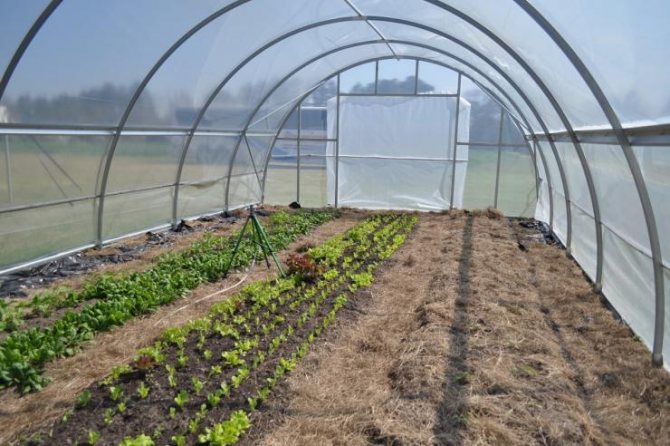

Photo: sowing greenhouse crops depends on the design and material of the greenhouse
Tips for beginners: what to plant in the fall in a greenhouse
Before active agricultural work begins, it is necessary to carefully study the greenhouse. If it has been used for a long time, then future crops are selected taking into account the parameters of the structure, the degree of acidity of the soil, and so on. Greater freedom of action is allowed when the greenhouse is at the design stage. This means that the structure is being built taking into account the existing plans.
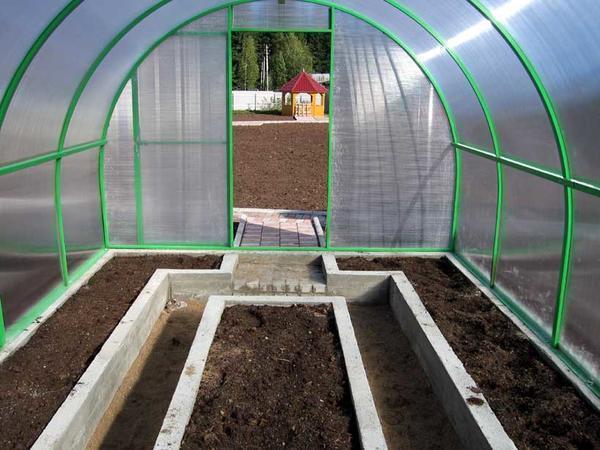

The following recommendations will help an experienced gardener to simplify the selection procedure:
- You can grow parsley in a greenhouse, but you need to provide the minimum required light and heat conditions. If the soil is not fertile enough, then the situation will help to correct the introduction of nutrients. You can fertilize with manure or nitrogen-containing substances.
- In order for the planting of sorrel to be successful, you need to use rhizomes that are 3 to 4 years old. Planting is done with an interval of 4 cm between the bushes.
- If you plan to grow strawberries, then in this case you need to put a polycarbonate greenhouse.
Ripening of seedlings in the autumn-winter period requires increased attention to the level of humidity, temperature and the presence of nutrients in the soil. Properly organized training will help to avoid many problems. For example, you need to throw in fertilizers and make sure that there is a sufficient concentration of minimal substances in the soil. Among the most common crops for autumn sowing, I single out sorrel, strawberries and parsley.
Sowing greenhouse greenhouse in spring
General principles and requirements for greenhouse greenhouse cultivation practically do not differ from similar work in open areas. However, there are some peculiarities.
- Polycarbonate structures will allow you to start sowing already at the end of February.
- In film greenhouses, these terms will slightly shift to warmer months, not earlier mid-March.
When to sow?
Greenhouse conditions allow sowing throughout the spring. The optimal timing is the period April May, although you can start much earlier, already from the end of February.
How to sow?
In comparison with the autumn sowing, some peculiarities should be adhered to here.
- In winter, add some snow to the greenhouse. This will greatly facilitate the work, eliminating the need for mandatory watering before sowing seeds. By thawing, the snow will provide the soil with the necessary moisture for successful seed germination.
- Loosen the soil to a depth of 5-7 cm.
- Make furrows along the entire length of the planned bed. Can also be sown scattered over the surface.
- After watering (if you forgot to bring snow), you should sow the seeds of the future green fertilizer and sprinkle with soil.
- As soon as the green mass rises 20-30 cm above the soil surface, it must be cut and dug up. The main thing is to prevent the flowering and insemination of the green manure culture.
The cut green part of the plants will quickly rot, providing the necessary nutrition for future vegetable plants.
What to sow in spring?
As spring green manures, the following are most preferable:
- phacelia,
- oats,
- spring rapeseed.
These crops can gain a rich green mass in a fairly short period, quickly rot after cutting, forming the necessary amount of nutrients necessary for the future harvest.
| IMPORTANT After mowing green manure plants for complete decay, it is necessary to wait at least 2 weeks before planting the main crops. |
Advantages and disadvantages of siderates
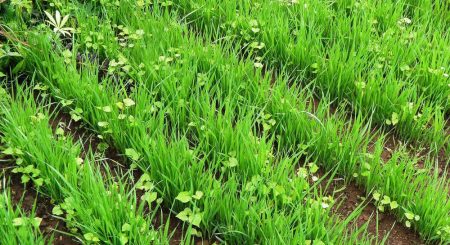

This method of soil fertilization has its supporters and opponents. Among the arguments for using siderates, it should be noted:
- absolute naturalness of fertilization, a guarantee of the purity of the future harvest;
- a small degree of interference in natural processes, safety for soil microflora and beneficial insects (earthworms, etc.);
- the greater benefit of vegetable nitrogen for tomatoes compared to the mineral form;
- high stability of organic substances, which saturate the soil with green manure;
- the relative cheapness of the method (in comparison with the purchase of manure or mineral fertilizers);
- replacement of crop rotation impossible in greenhouses.
The disadvantages of the method include its laboriousness. Some gardeners believe that the results obtained are not worth the time and effort.
The effect of the use of green manure should not be expected soon. Sowing must be carried out for several years before the soil is fully restored, especially when it comes to poor, significantly depleted soils. Subsequently, with the regular carrying out of the procedure, it is possible to achieve an increase in the volume of tomato harvest by almost 2 times. But improper greening, in particular, mistakes in the choice of plants for sowing, can reduce the yield of tomato planting.
Sowing greenhouse greenhouse in autumn
In the autumn, sowing is carried out from late August to early October, immediately after the harvest is complete.
Advantages of autumn green manure
one.The duration of the stay of green manure plants in the greenhouse soil
This will allow the formation of a developed root system that can sufficiently loosen the compacted soil. Long-term decomposition of green mass will increase the supply of minerals.
2. Plant protection
The greens of the winter siderates grown in spring will protect the tender vegetable seedlings from possible spring frosts and serve as mulch against the spread of weeds and overheating.
3. Possibility of growing green manure twice per season
- In late August and early September, spring crops are sown, quickly gaining green mass:
- mustard,
- phacelia,
- cereals.
- At the end of September-October, they sow:
- winter cereals,
- rape,
- phacelia.
Features of growing green manure in a greenhouse in autumn
The algorithm of actions is similar to open ground.
- First of all, it is necessary to remove all plant residues, dig up the soil, removing weeds.
- Water the planting area with water and scatter the seeds evenly over the surface.
- It remains only to slap the sown areas with a flat shovel.
- If possible, it will be a good idea to sprinkle the seeds with a small layer of nutritious soil or humus.
It depends on the timing of sowing in the autumn, whether a sufficient amount of green mass will have time to accumulate green manure culture before frost, so that, after mowing and decay, sufficient amounts of nutrients can be supplied to the future harvest. However, it is not necessary to mow down sufficiently grown green plants, you can only trim the upper part.
The main thing is to prevent flowering and seed formation, otherwise, instead of benefit, green manure will do harm, multiplying like weeds. If the inflorescences are nevertheless formed, then the upper part of the plants should be cut off, leaving the rest of the plant to rot on its own until spring, thereby fertilizing the soil.
Watering and fertilizing
Growing cucumbers in greenhouses require special watering. First, it's worth talking about fertilizers. The fact is that when the air temperature drops. The ground temperature is also gradually dropping. It is at this moment that plants begin to receive less of those vitamins and minerals that they so need. In order to replenish the missing amount of minerals, you can use water-soluble fertilizers for external use. But fertilizers are still not natural elements that plants get from soil, air and sunlight. Therefore, you should not be guided in this situation by the rule, the more the better. The fertilizer recipe and schedule for the planted crops should be followed closely.
Now a little about the system of watering cucumbers in the fall in the greenhouse. Since the soil temperature gradually decreases, the amount of irrigation should also become smaller. Due to waterlogging of the soil, hypothermia of the seeds, the root system of the planted seedlings or an already grown plant can occur. In the soil of the greenhouse, harmful bacteria will begin to multiply, which are capable of destroying all living things, and even the fact that their variety is a hybrid will not save the planted cucumbers. In order for watering to be carried out efficiently and to be beneficial, it must be carried out every 12-18 days and consume nine liters of liquid per square meter. Watering is best done in the morning - during the day, the temperature of both the air and the soil becomes higher, which means it is more comfortable.
If you see that the bacteria managed to settle in the soil of the greenhouse, and the plants begin to wither, then this situation can be dealt with. For this, milk is perfect, both fresh and sour. To combat the problem that has arisen, you need to dilute milk in water in a 1: 1 ratio and water the soil directly under the root. No need to flood the plant.
Sowing siderates in a greenhouse before winter
Autumn podzimny sowing of green manure crops is very widespread. In this case, mainly winter crops are used, which form a green carpet only in spring.
Winter sowing rules
1. Plant winter crops
It should be noted that for late autumn sowing, only those green manure crops are used that will not freeze out in winter.
1. Increase the seed rate
When sowing under winter, one should take into account the fact that a certain part of the plants may freeze out during frost. In order to avoid sparseness, it is worth doubling the seeding rate, or based on the number of seeds you have.
2. Don't bloom
Plants regrown in spring should not be brought to flowering and seed formation.
3. Embed green manure in the soil in advance
Siderata must be mowed in a timely manner and embedded in the soil no later than 14 days before planting the main crop. This time will be enough for the complete decay of the cut leaves and stems, and get the maximum benefit for the future harvest. ________________________________________________________________________________
Most often, podzimny sowing of siderates is used before planting seedlings of cucumbers or tomatoes. Often, seedlings are planted directly in a green carpet, which serves as a shelter from a cold snap and mulch from weeds. ________________________________________________________________________________
The action of siderates on the soil
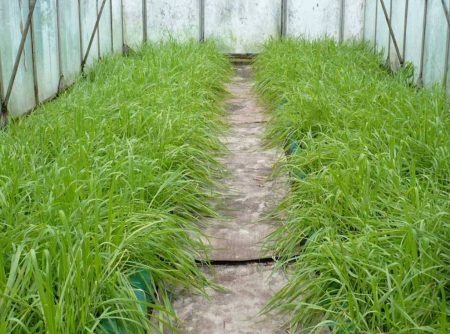

Siderata are sown on the plot in between the cultivation of the main crops in order to restore fertility and improve the quality of the soil. Plants are suitable for this, the decomposition of which produces a large amount of humus. It is this substance, the maximum proportion of which is contained in chernozems (10-15%), that determines the fertility of the soil.
Green manure is valuable not only as a fertilizer that can be applied in the form of compost. Plants are grown directly on the garden bed, since already during the growing season they improve soil performance:
- structure - loosen the soil, increasing its permeability to oxygen and moisture;
- microbiological indicators - stimulate the reproduction of beneficial microorganisms that synthesize nitrogen and suppress pathogenic microflora in the soil;
- cleanliness - inhibit the growth of weeds, some species clean the soil from fungi, viruses, soil pests or larvae.
Sowing green manure in summer
Often, for additional nutrition, green fertilizers are sown additionally during the summer in the aisles near cucumber plants.
- The green manure growing between cucumbers will protect them from overheating and sunburn.
- In addition, green green manure plants will attract beneficial insects that provide full pollination.
- By periodically pruning such plants, after they have rotted, you can provide additional feeding for cucumbers.
After harvesting cucumbers from the greenhouse, for health improvement and fertilization of the vacated areas, you can occupy them with any siderates.
What to sow in summer?
It is claimed that the greatest effect is achieved after sowing legumes cultures and mustard... Restore the soil after cucumbers will be successfully helped cereals, incl. winter crops. But the best effect is obtained after a combination of green manure.
Out of competition here, according to the reviews of experienced gardeners, wicky mixture with oats, which, in addition to nutrition in the form of basic macronutrients: nitrogen, phosphorus and potassium, will relieve nematodes.
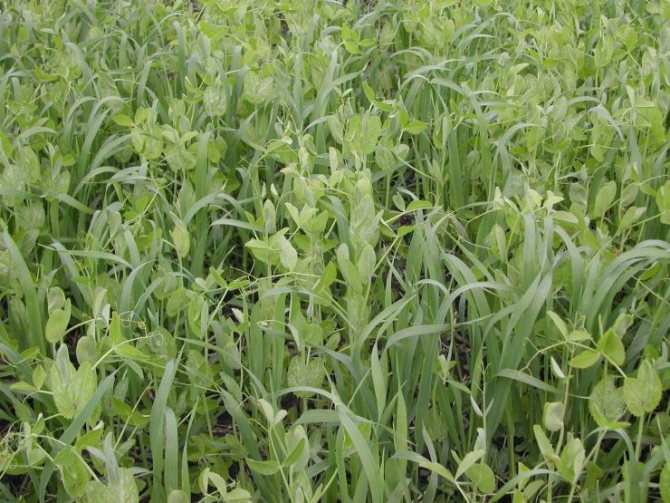

Photo: green manure mixture
How to sow green manure
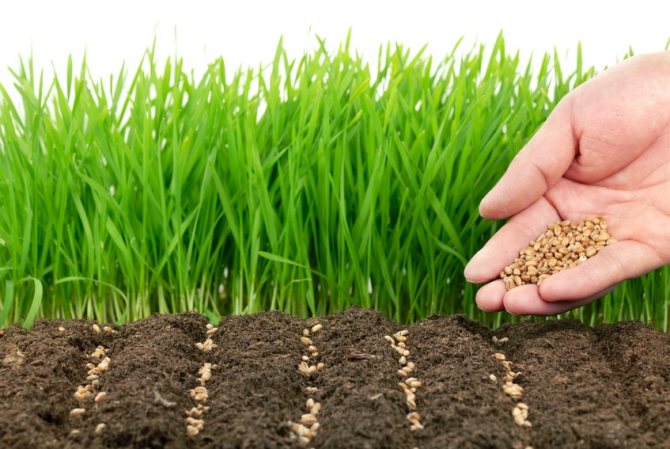

In autumn, grass seeds are usually generously scattered over the beds and covered with compost.
Some gardeners do not violate traditions and plow the land or dig up and only then sow siderates. But this technology contradicts one of the principles of organic farming - not to touch the topsoil. However, this is not prohibited.
If the winter crops have managed to rise before the snow and frost, do not worry. Leave them until spring, and before planting the main crops, mow or cut them and dig up the ground a couple of days later.
Plant the main crops no earlier than two weeks after harvesting the green manure.The ideal order is as follows: they cut off the herbs, dug up after a week, loosened the soil after another and planted their own cucumbers, tomatoes, peppers.
You should also adhere to the following main rules:
- Do not sow green manures of the same family as the main crops.
- Alternate green fertilizers in the same area - do not sow the same grasses twice in a row.
In fact, siderates can be any plants in the beds that you do not allow to ripen and sow your seeds, but mow the grass in time.
What greenhouse crops to sow in a greenhouse?
In general, the choice of greenhouse crops is extensive for the greenhouse industry.
| The main requirement is subsequent main crop and green manure must belong to different families |
Mustard
Mustard is very popular for sowing in a greenhouse, which successfully grows green mass even before the onset of frost, thereby protecting the soil from weeds and pests.
It does not need complete mowing if it has not grown to the seed stage. In this case, you can slightly knock down the greens by cutting off the inflorescences, leaving the main plants until they decay on their own.
This culture is good for sowing in winter and spring. It remains to wait for the early shoots and embed them in the soil, again no later than 2 weeks before the vegetable seedlings are placed there.
Oats and phacelia
Often found as greenhouse greenhouse oats sown in September and formed enough green mass before frost. AND
Phacelia is a favorite version of green manure among experienced summer residents.
Green manure mixture
It is not a monosideral culture that will be of great benefit, but a mixture of different seeds.
The composition of the green manure can be completely different:
- soy + oats,
- vetch + oats,
- peas + oats, etc.
It makes no sense to choose any one specific type of greenhouse greenhouse for a specific culture. Everyone brings benefit. But a mixture of different types can significantly increase their effectiveness.
Surely, your more experienced neighbors in the country have already found their optimal combination. Ask for advice. I am sure that you will be offered a lot of proven recipes. ______________________________________________________________________________
Read more about the rules of cultivation and types of green manure in this article.
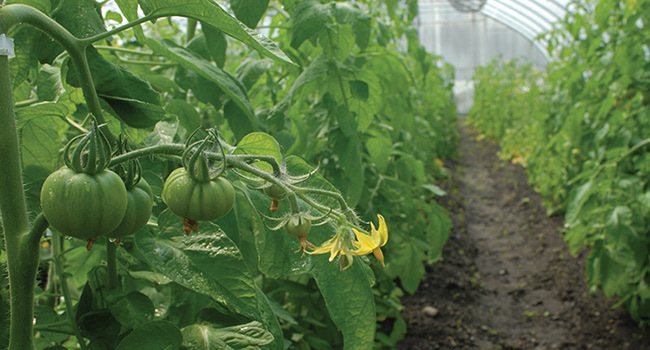

What can be grown in an unheated greenhouse in spring?
Diseases of greenhouse vegetables are not terrible for fruit trees and shrubs, but the yield of fruit trees is noticeably improved.
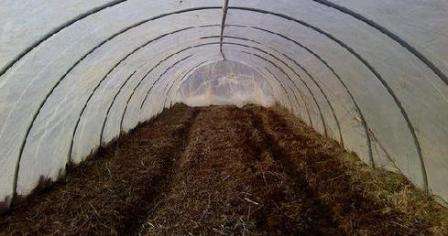

So, if your summer cottage has a greenhouse, be sure to use our tips. So you will not only increase the quantity and quality of your crop, but you can also extend the life of the structure itself. Autumn work in the greenhouse polycarbonate do not require much time and special knowledge, so even inexperienced summer residents will be able to do it.
What to sow in the greenhouse for tomatoes and cucumbers?
What green fertilizers to choose before and after growing tomatoes and cucumbers in a greenhouse?
In general, it is believed that since cucumbers and tomatoes are grown in greenhouses in the overwhelming majority of cases, green manure can be grown almost any that is found. they all belong to different families.
Siderata will fill the lack of potassium
In the fall, it will be most useful to sow the vacated area. winter cereals... Before frost, the emerging seedlings should be covered with snow to avoid freezing.
The grains will supply the soil with potassium, which is so necessary for nightshades and cucumbers. Its deficiency is often the main reason for delayed flowering and low fruit set.
- Anything other than cereals will be great to use. legumes, cruciferous or phacelia.
- Excellent results noted when siderized mixture different cultures.
Siderata will disinfect the soil
It is important to remember that if part of your greenhouse was occupied by tomatoes, then with a high degree of probability it can be argued that late blight pathogens have accumulated in the soil.This fact should be taken into account when choosing a future green fertilizer.
- A great benefit in this case will be from placement in a greenhouse. mustard, phacelia or oil radish, which, in addition to cleansing phytophthora, will also provide plants with available nitrogen.
- For disinfection, sowing will be useful alfalfa, as well as rye.
Especially for cucumbers
The owners of greenhouses in which the cultivation of cucumbers is planned should take into account some of the biological characteristics of this crop.
Having a very underdeveloped root system, cucumber plants cannot get nutrition from the deep layers of the soil. Nutrition takes place by absorbing nutrients only from the topsoil, which should be very fertile.
Almost all recommended green manure plants will be able to cope with this task. However, it is still advisable to use crops that quickly form vegetative massto help you get the most out of its decomposition.
Nuances to be considered
Since these plants belong to the pumpkin family, they like to grow in a humid and warm environment. This is why this vegetable grows and bears so well in the summer. For the successful cultivation of cucumbers in a greenhouse, these requirements must be taken into account and the appropriate conditions must be created. This is necessary if you decide to grow seedlings from seeds in the same greenhouse. The temperature of the soil in which the seeds will be planted must be at least 12 degrees. The beginning of autumn is a great time to grow in a greenhouse: the summer heat has already passed, the air temperature has dropped significantly, but the soil still retains the necessary indicators, and the probability of frost at this time is minimal. Therefore, planting seeds can be done directly into the ground, without using any additional containers for this. Why are temperature readings so important? The fact is that if you plant seeds in an insufficiently warm soil, then they simply will not germinate or they may die from various kinds of bacteria. If everything is done correctly, then after three or four days you will see sprouted shoots in the holes.
If you doubt the temperature indicators of the soil, then the seedlings can be grown in special small containers, which are also conveniently located in the greenhouse. This point is relevant if you decide to grow these plants in early October, when the weather becomes changeable. Cucumbers in the greenhouse grow wonderfully even at this time of year, if you choose a special late variety. The class of late crops includes specially bred varieties - hybrids that are immune to many diseases and are resistant to various conditions. The hybrid is popular for the reason that such plants are unpretentious, they do not require special care and a schematic watering process. The hybrid will survive in conditions of a sharp, but short-lived temperature difference, withstand pests, and even for growing in a greenhouse in winter, it is better suited than any other variety.
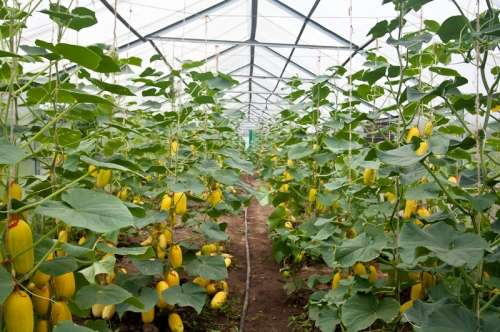

The choice of green manure for the future greenhouse culture
In order for the plants to give a good harvest in the greenhouse and get the maximum of the necessary trace elements from the soil, without the use of chemical fertilizers, it is important to follow a certain order.
Experienced vegetable growers advise adhering to this scheme:
- After ripening and collecting radishes, carrots, cabbage, parsley, to renew the soil, sow the ridges with winter rapeseed or clover.
- Sow legumes in this area next season.
- Immediately after the end of the collection of legumes, prepare the soil for phacelia, buckwheat, oats or sunflowers.
- For the fourth season, potatoes and tomatoes will give an excellent harvest.
- Next, sow the greenhouse with alfalfa, sweet clover.
- After that, it is worth planning the cultivation of cucumbers and zucchini.
- For the recovery of the soil after pumpkin seeds, mustard and radish are suitable.
Important! Cruciferous crops should not be used as precursors to existing cabbage species. And after and before the legumes, abandon the planting of alfalfa, spring vetch, pink clover, white sweet clover.
Consider green manure plants for specific plants. Cucumbers are compatible with radish, white mustard. These green manures disinfect the soil, returning useful trace elements that the vegetable used during its growth. It is a good idea to sow legumes and cereals. But vetch-oatmeal is rightfully considered a super-mixture after cucumbers. This combination will allow:
- saturate the soil with nitrogen, phosphorus, potassium;
- loosen the top layer thanks to the developed roots;
- get rid of nematodes.
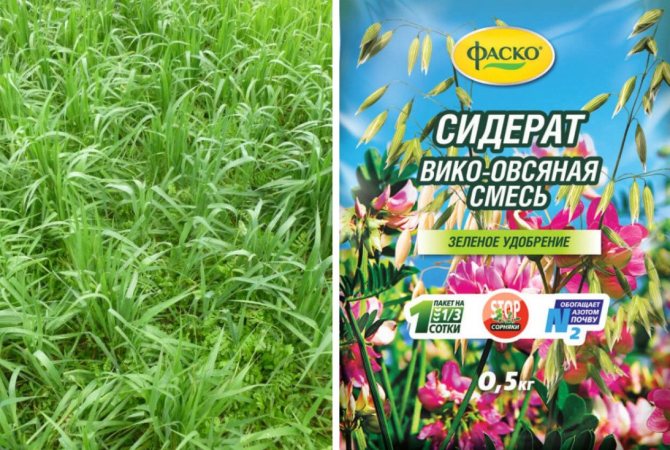

Eggplants, tomatoes, peppers strongly deplete the earth. To restore the soil, it is worth sowing winter cereals in the fall. It's good if November and December are snowy. Snow-covered gatherings in the greenhouse space gain protection from the cold and full moisture. Cereals provide tomatoes with potassium, which is responsible for a strong stem, juiciness and sugariness of the fruit.
Phacelia is the “green doctor” that rid the earth of wireworms after cultivating tomatoes. Additionally, it saturates the soil with nitrogen, potassium, reduces acidity, and loosens well.
You will be interested in learning how to get rid of mold in your greenhouse.
Siderata for tomatoes
In a greenhouse in the middle lane, not many plants are grown, mainly cucumbers, tomatoes and peppers. Therefore, the use of green manure will be a real salvation for the impoverished soil. Before planting tomato seedlings, you can sow any legumes, cruciferous or cereal siderates. The most ideal option is phacelia. You can also sow: vetch, alfalfa, lupine, oats, buckwheat, goat's rue. The use of these green manures will increase the tomato yield by at least 30%! In addition, pests will not be afraid of seedlings.
Siderata that are sown after tomatoes
After the tomatoes, it is worth planting plants that will cleanse the soil of phytophthora and saturate it with nitrogen. The best choices are phacelia, mustard and oil radish. If next year you plan to grow tomatoes in the greenhouse again, plant the beds with rye or alfalfa, which will disinfect the soil.
Siderata for cucumbers
Cucumbers absorb nutrients from the topsoil, so it is important that it is fertile. Almost any green manure will help to cope with this task: phacelia, barley, oats, peas, vetch, rapeseed, etc. The listed green manures can also be sown in the aisles in summer. This will noticeably improve the taste of zelents.
But it is undesirable to sow rye before cucumbers. According to observations, it not only oppresses weeds, after it, and cucumbers develop worse than usual.
Siderata that are sown after cucumbers
When greenhouse cucumbers are harvested, it is best to replace them with legumes such as peas, beans, or broad beans. They will restore soil fertility and enrich it with nitrogen.
We hope you are convinced that greenhouse greenhouse crops are essential in autumn. Reviews of summer residents who are actively sowing oats, mustard, phacelia and other plants indicate that this is a useful and effective business. Try and sow green fertilizers in your greenhouse!
You will find more information about siderates in the articles:
What are siderates and how to use them
Siderata are fast-growing annuals or perennials with lush greenery and a fibrous, highly branched root system. They are used for weed control and as a green fertilizer, since the ground part is an excellent biological humus for the soil. The best times to plant green manures are spring after the snow melts and fall after harvesting in the greenhouse or open beds.
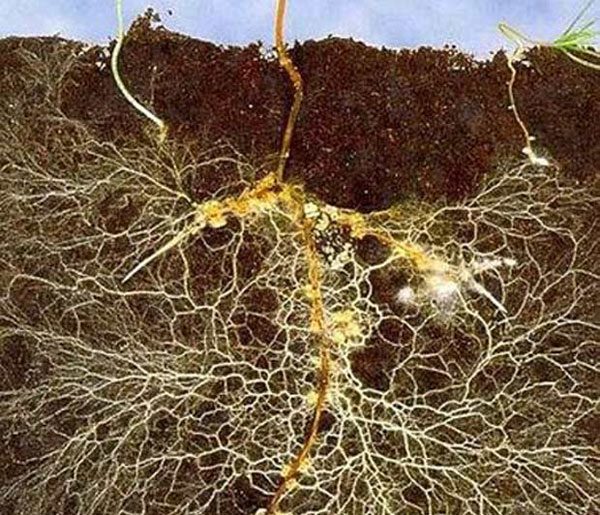

The benefits of green manure for vegetable growing
Sideration is an extremely significant event for organic farming in greenhouses, vegetable gardens, in the fields.The plowing of useful greens is actively carried out on an industrial scale, and not only by amateur gardeners. Greenhouse plants perform many useful functions:
- normalize soil acidity;
- inhibit the growth of weeds;
- create comfortable conditions for the reproduction of beneficial bacteria, worms;
- enrich the earth with nitrogen, phosphorus, humic acids;
- make the dense soil looser and more airy;
- help destroy pests;
- some flowering species attract beneficial insects, which is significant for varieties of bee-pollinated vegetables in a greenhouse or trees outside.
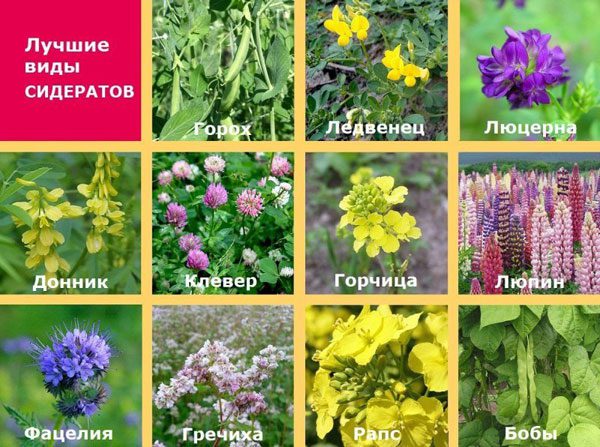

Types of green manure crops
Sideractive crops are subdivided into types:
- Legumes, these include lupine, vetch, chickpeas, alfalfa, peas, clover, lentils. The legume type of grasses contributes to the active accumulation of nitrogen in the soil. Legumes planted three times in a row in the same place are compared to applying manure to the ground.
- Cruciferous plants include mustard, rapeseed, oil radish. This species is known for its ability to decontaminate the soil and helps in pest control. In addition, herbs are able to adapt organic matter to any plant for easier assimilation.
- Buckwheat (buckwheat). Natural source of phosphorus, potassium and organics.
- Cereals, which include rye, barley, wheat. This species, growing, is able to suppress the growth of unnecessary weeds.
- Hydrophilic, they include phacelia. Numerous shoots actively decompose, saturating the soil with nitrogen.
- Asteraceae - sunflower, calendula. The strongly branching root penetrates into the deeper layers, the root processes loosen and ventilate the soil.
- Amaranth (amaranth). Increases soil fertility, its structuredness.
Several variations of sowing plant helpers in a greenhouse or in a vegetable garden are practiced:
- independent, when the main crop is planted after planting green manure;
- compacted, in which the seedlings are planted directly between the rows of green manure, and the latter are pruned at a level of 5-7 cm;
- rocker, with it, the main crop grows separately, and fertilizers - in the aisles.
Green manure for open ground
Among gardeners, the most suitable green manure for open ground are:
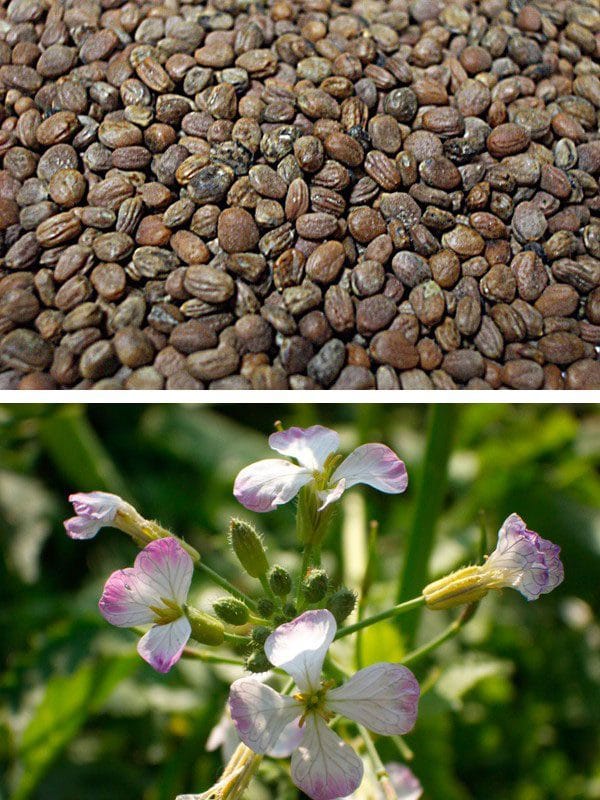

The radish normalizes the soil PH level, neutralizes nitrate pollution, and the secreted essential oils repel pests. It is sown in open ground mainly in summer and autumn. The cut leaves are used as mulch or left as compost for the next season.
Phacelia is an excellent honey plant that attracts pollinating insects, it is distinguished by its rapid growth, which requires mowing several times. The resulting dense "litter" perfectly retains moisture and shades vegetable seedlings. Seeds are sown in early spring, as the plant is not afraid of low temperatures.
White clover is distinguished by a wildly growing, branching root system, which in an excellent way loosens and puffs up the ground, preventing stagnant and decaying processes in it, improving aeration. Sowing in open ground - in early spring. The cut stems and leaves are used as mulch and compost.
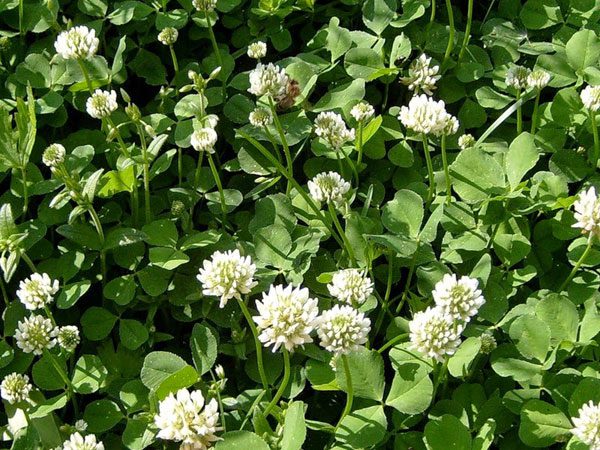

Rape is known for its ability to improve soil structure and quality. In terms of the content of trace elements, it can be compared with manure. Powerful green mass perfectly shades plantings and protects from strong winds. Seeds are sown in early spring and autumn, mainly in rows between beds.
Greenhouse plants for open ground are distinguished by extremely fast germination and cold resistance, are resistant to keel, and reduce the leaching of minerals from the soil. These plants are capable of improving the condition of the earth in the shortest possible time, making its structure more airy and permeable.
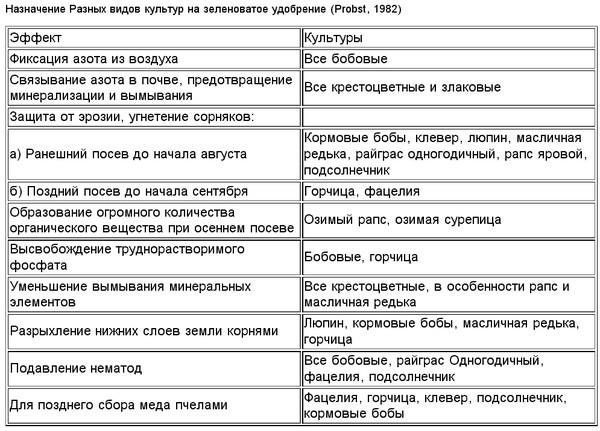

Greenhouse greenhouse crops
The greenhouse soil in one planting season is very depleted, the surface layer is subject to erosion.The use of natural helpers in this case will be an ideal option for its restoration and enrichment.
Greenhouse greenhouses are able to disinfect the soil from diseases, get rid of pests, and saturate the soil with missing microelements. The most important thing is to prevent soil fatigue and oversaturation. This means that the same fertilizing crops should not be grown all the time in one place; crop rotation is mandatory.
The best greenhouse greenhouse crops are:
- Representatives of cereals - oats and rye, they are able to clean the soil from fungi and infections, help in the fight against late blight. The dense greens of cereals are not buried in the ground during cutting, but are left to rot on the surface.
- Mustard is a popular, multifunctional green fertilizer. She is a kind of "orderly" in the fight against various types of rot in a greenhouse, scab, rhizoctonia. Planting mustard in the greenhouse helps to reduce the number of wireworm larvae.
- Types of legumes - peas, beans, beans get along well with all crops in the greenhouse. They do not differ in their ability to inhibit pathogenic microflora, but they are excellent sources of organic matter.
When is it better to do sideration
Greenhouse greenhouse crops can be planted in spring and autumn. Some gardeners practice planting in the summer, sowing seed between the rows of vegetables. In such a case, the compatibility of green manure and vegetable crops should be taken into account.
In the spring, green manures are sown in a greenhouse, having previously saturated the soil with snow abandoned from the street. Seeds are sown not in rows, but chaotically. After the crop has grown about 20 cm, it is cut off, leaving the greens on the surface to decompose and turn into humus.
When sowing greenhouse crops in a greenhouse in the fall, the seeds are densely poured into the ground, humus is added, spilled abundantly with water and left until spring. After overwintering, plants will quickly pick up greens. Preventing overgrowth and flowering, the grasses are mowed with a Fokin flat cutter and slightly added to the top layer of the soil.
Read also Salad for the winter without vinegar recipes
Video: Autumn landing in a greenhouse
Having chosen what to sow in the greenhouse in the fall, you need to sow the seeds with the expectation that they have time to germinate a little. The advantages of winter planting are obvious - green fertilizers are in the soil for a long time, and, therefore, the time of their favorable fertilizing effect increases.


